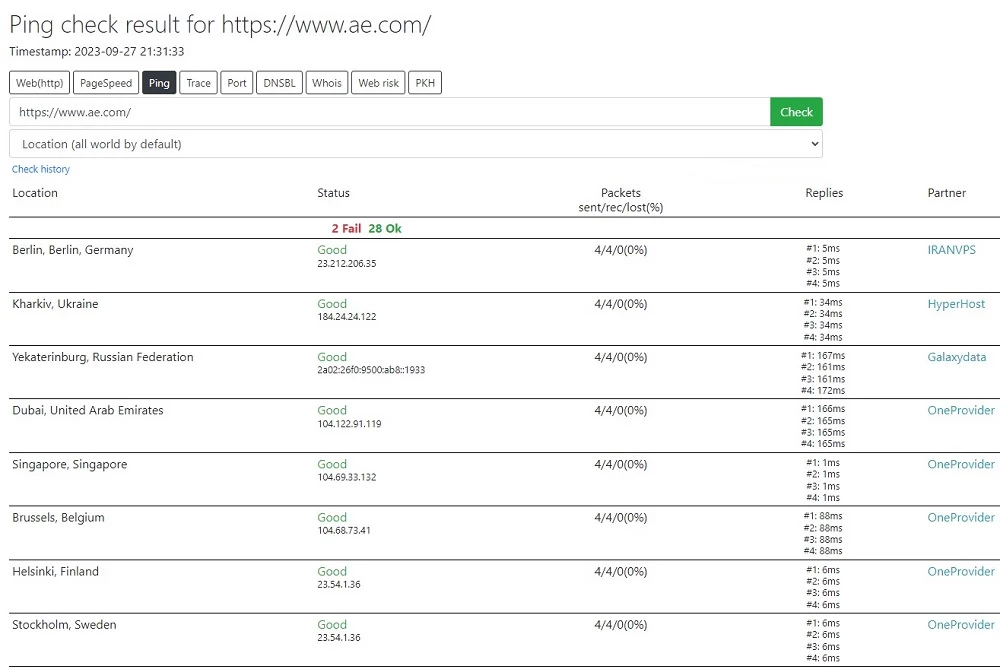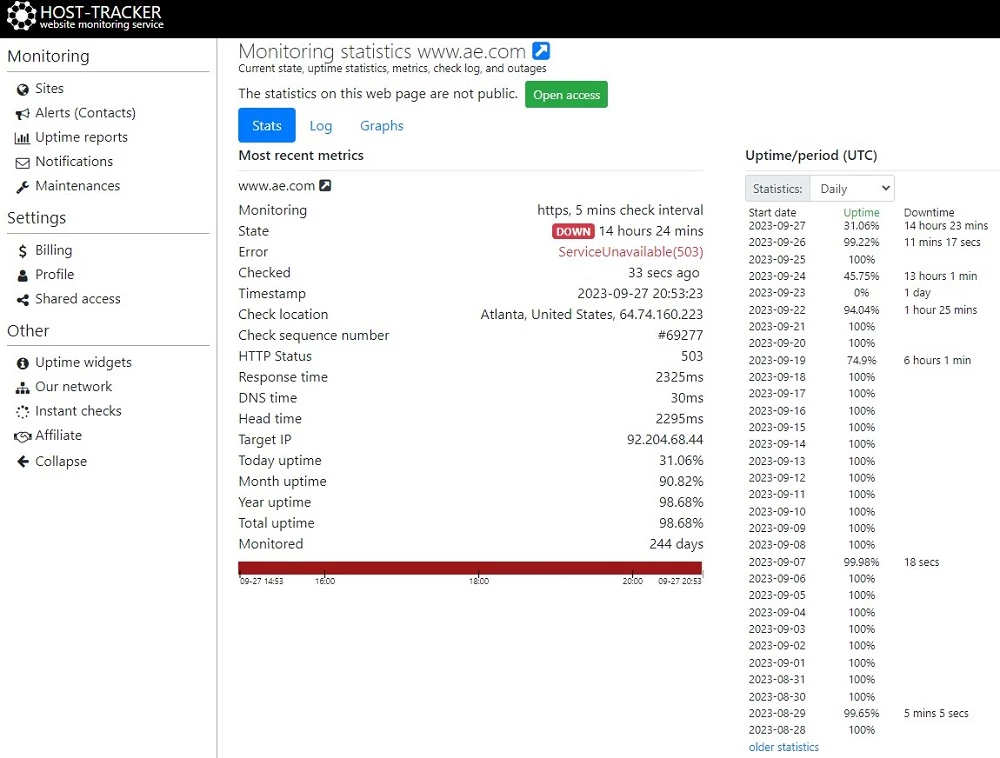Why is the American Eagle Website so Slow?

American Eagle Outfitters, widely recognized as a prominent player in the retail industry, is celebrated for offering trendy and high-quality apparel, primarily targeting the younger demographic. However, a recurrent complaint is that the user experience is hampered by the website’s sluggishness. This article delves deep into various facets and underlying reasons contributing to the slow pace of the American Eagle website.
Overview
A user-friendly website is a cardinal component for e-commerce businesses, as it can significantly impact customer satisfaction, conversion rates, and the overall user experience. Despite the escalating demand for a seamless online experience, the American Eagle website has gained notoriety for its lackluster speed, raising eyebrows in the e-commerce community.
Server Response Time
One conceivable reason for the slowness of the American Eagle website could be attributed to the Server Response Time. This is the time it takes for the server to respond to a browser’s request. A delay in this response can lead to a gradual load time, causing the overall performance of the website to wane. If American Eagle’s servers are not adequately optimized or are overloaded with requests, users may experience significant delays. To prevent such situations, it is vital to ping site online tool from LINK automated monitoring platform.

Heavy Images and Unoptimized Content
E-commerce websites like American Eagle tend to be laden with high-quality images and multimedia content to showcase their products. However, such elements, if not properly optimized, can cause sluggish loading times. Uncompressed images and videos consume a lot of bandwidth, significantly impacting the website’s speed, making it imperative to use optimized content to ensure smooth navigation.
Code Density
Another contributing factor to the website’s slowness can be the density and complexity of the website’s code. Inefficient or redundant coding can result in sluggish load times. It is crucial for developers to regularly refine and streamline the codebase to avoid unnecessary delays and improve overall website performance.
Third-party Scripts and Plugins
Third-party scripts and plugins are often incorporated to extend functionalities and enhance the user experience. However, they can also be a bottleneck in the website’s performance. The integration of excessive external elements can lead to an increase in load time, impacting the user experience on the American Eagle website.
Traffic Volume
High traffic volume is a double-edged sword for e-commerce websites. While it means a higher number of potential customers, it can also overload the servers, leading to slower load times. American Eagle, being a popular brand, draws a substantial amount of traffic, especially during sales and promotional periods, which can potentially cause the website to slow down. To prevent such things, it is important to monitor the website using a powerful website monitoring service like LINK platform.
Web Hosting
The type of web hosting and the hosting provider’s infrastructure can also play a pivotal role in a website’s performance. Shared hosting, where multiple websites share the same server resources, can impact the website’s speed. It is plausible that American Eagle might be sharing server resources with other websites, leading to potential bottlenecks and reduced speed. There are a lot of solutions to such an issue, and if you’re managing your own website in a similar niche, check website hosting all the time on host tracker automated monitoring platform to avoid such issues and change hosting type as soon as it starts causing problems.

Mobile Optimization
With the omnipresence of smartphones, optimizing websites for mobile users has become paramount. A website that is not well-optimized for mobile devices will inevitably suffer from poor loading speed on those devices. If the American Eagle website is not adequately optimized for mobile, it could alienate a significant portion of its customer base.
Network Issues
Network-related issues, such as poor internet connection or issues with Content Delivery Networks (CDNs), can also be responsible for slow website speeds. CDNs are used to distribute the delivery of website content based on the user’s geographical location to reduce page load times. If the CDN is experiencing issues or the user is on a weak or unstable internet connection, the American Eagle website may load slower than expected.
User Expectations and Industry Standards
The evolving nature of user expectations and industry standards in web development has led to the development of richer and more interactive websites. However, this development has also led to more complexities and dependencies, affecting website speed. If American Eagle’s website endeavors to meet the latest industry standards without addressing the accompanying challenges, it may inadvertently result in slower load times.
Impact on Business
The slow speed of the American Eagle website is not just a minor inconvenience for users; it also has far-reaching implications on the business itself. Slow load times can lead to lower conversion rates, higher bounce rates, and a loss of customer trust. As the digital face of the brand, the website’s performance can significantly impact the brand’s image and revenues, making it crucial for American Eagle to prioritize addressing these issues.
Remedial Measures
To ameliorate the issues related to the website’s sluggishness, American Eagle can consider implementing several remedial measures. Employing optimized content, refining the codebase, minimizing the use of third-party scripts, and investing in superior hosting solutions can contribute to enhancing the website’s performance. Regularly monitoring the website’s speed and addressing potential bottlenecks proactively can also ensure a more streamlined user experience.
Conclusion
In conclusion, the slowness of the American Eagle website can be ascribed to a multitude of factors, including but not limited to, server response time, unoptimized content, dense coding, third-party integrations, high traffic volume, inadequate hosting solutions, lack of mobile optimization, and evolving user expectations and industry standards.
To maintain customer satisfaction and uphold the brand image, it is imperative for American Eagle to proactively work on mitigating these issues by implementing strategic remedial measures and continually optimizing the website for enhanced performance and user experience. The significance of a smooth and responsive website in the retail industry cannot be overstated, especially in a competitive environment where the user experience is paramount.